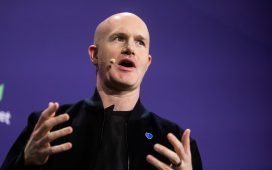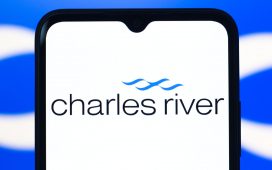(An excerpt from the book, “Shut Up and Keep Talking: Lessons on Life and Investing from the Floor of the New York Stock Exchange,” by Bob Pisani.)
Thirty years ago this week, State Street Global Advisors launched the Standard & Poor’s Depositary Receipt (SPY), the first U.S.-based Exchange Traded Fund (ETF), which tracked the S&P 500.
Today, it’s known as the SPDR S&P 500 ETF Trust, or just “SPDR” (pronounced “Spider”). It is the largest ETF in the world with over $370 billion in assets under management, and is also the most actively traded, routinely trading over 80 million shares daily with a dollar volume north of $32 billion every day.
How ETFs differ from mutual funds
Holding an investment in an ETF structure has many advantages over a mutual fund.
An ETF:
- Can be traded intraday, just like a stock.
- Has no minimum purchase requirement.
- Has annual fees that are lower than most comparable mutual funds.
- Are more tax efficient than a mutual fund.
Not a great start
For a product that would end up changing the investment world, ETFs started off poorly.
Vanguard founder Jack Bogle had launched the first index fund, the Vanguard 500 Index Fund, 17 years before, in 1976.
The SPDR encountered a similar problem. Wall Street was not in love with a low-cost index fund.
“There was tremendous resistance to change,” Bob Tull, who was developing new products for Morgan Stanley at the time and was a key figure in the development of ETFs, told me.
The reason was mutual funds and broker-dealers quickly realized there was little money in the product.
“There was a small asset management fee, but the Street hated it because there was no annual shareholder servicing fee,” Tull told me. “The only thing they could charge was a commission. There was also no minimum amount, so they could have got a $5,000 ticket or a $50 ticket.”
It was retail investors, who began buying through discount brokers, that helped the product break out.
But success took a long time. By 1996, as the Dotcom era started, ETFs as a whole had only $2.4 billion in assets under management. In 1997, there were a measly 19 ETFs in existence. By 2000, there were still only 80.
So what happened?
The right product at the right time
While it started off slowly, the ETF business came along at the right moment.
Its growth was aided by a confluence of two events: 1) the growing awareness that indexing was a superior way of owning the market over stock picking; and 2) the explosion of the internet and Dotcom phenomenon, which helped the S&P 500 rocket up an average of 28% a year between 1995 and 1999.
By 2000, ETFs had $65 billion in assets, by 2005 $300 billion, and by 2010 $991 billion.
The Dotcom bust slowed down the entire financial industry, but within a few years the number of funds began to increase again.
The ETF business soon expanded beyond equities, into bonds and then commodities.
On November 18, 2004, the StreetTracks Gold Shares (now called SPDR Gold Shares, symbol GLD) went public. It represented a quantum leap in making gold more widely available. The gold was held in vaults by a custodian. It tracked gold prices well, though as with all ETFs there was a fee (currently 0.4%). It could be bought and sold in a brokerage account, and even traded intraday.
CNBC’s Bob Pisani on the floor of the New York Stock Exchange in 2004 covering the launch of the StreetTRACKS Gold Shares ETF, or GLD, now known as the SPDR Gold Trust.
Source: CNBC
Staying in low-cost, well-diversified funds with low turnover and tax advantages (ETFs) gained even more adherents after the Great Financial Crisis in 2008-2009, which convinced more investors that trying to beat the markets was almost impossible, and that high-cost funds ate away at any market-beating returns most funds could claim to make.
ETFs: poised to take over from mutual funds?
After pausing during the Great Financial Crisis, ETF assets under management took off and have been more than doubling roughly every five years.
The Covid pandemic pushed even more money into ETFs, the vast majority into index-based products like those tied to the S&P 500.
From a measly 80 ETFs in 2000, there are roughly 2,700 ETFs operating in the U.S., worth about $7 trillion.
The mutual fund industry still has significantly more assets (about $23 trillion), but that gap is closing fast.
“ETFs are still the largest growing asset wrapper in the world,” said Tull, who has built ETFs in 18 countries. “It is the one product regulators trust because of its transparency. People know what they are getting the day they buy it.”
Note: Rory Tobin, Global Head of SPDR ETF Business at State Street Global Advisors, will be on Halftime Report Monday at 12:35 PM and again at 3 PM Monday on ETFedge.cnbc.com.











